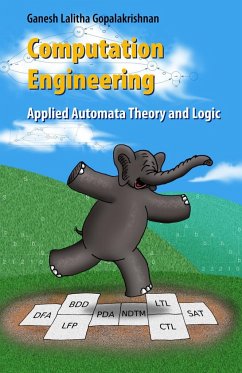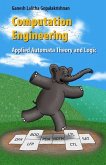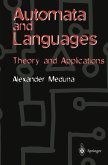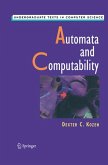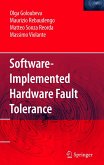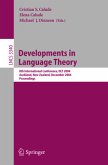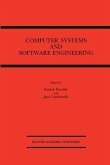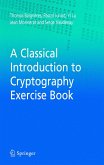Although it is critical in today's world that students who take automata theory and logic courses retain what they have learned and understand how to use their knowledge, many textbooks typically emphasize automata theory only, not logic, thus losing a valuable opportunity to tie these subjects together and reinforce learning. This textbook uses interactive tools throughout, such as simple BDD and SAT tools. By providing a blend of theory and practical applications the material is presented as both inviting and current. Key concepts are illustrated in multiple domains so that information is reinforced and students can begin to tie theory and logic together.
It takes more e?ort to verify that digital system designs are correct than it does to design them, and as systems get more complex the proportion of cost spent on veri?cation is increasing (one estimate is that veri?cation complexity rises as the square of design complexity). Although this veri?cation crisis was predicted decades ago, it is only recently that powerful methods based on mathematical logic and automata theory have come to the designers' rescue. The ?rst such method was equivalence checking, which automates Boolean algebra calculations.Nextcamemodelchecking,whichcanautomatically verify that designs have - or don't have - behaviours of interest speci?ed in temporal logic. Both these methods are available today in tools sold by all the major design automation vendors. It is an amazing fact that ideas like Boolean algebra and modal logic, originating frommathematicians andphilosophersbeforemodern computers were invented, have come to underlie computer aided tools for creating hardware designs. The recent success of 'formal' approaches to hardware veri?cation has lead to the creation of a new methodology: assertion based design, in which formal properties are incorporated into designs and are then validated by a combination of dynamic simulation and static model checking. Two industrial strength property languages based on tem- ral logic are undergoing IEEE standardisation. It is not only hardwaredesignand veri?cation that is changing: new mathematical approaches to software veri?cation are starting to be - ployed. Microsoft provides windows driver developers with veri?cation tools based on symbolic methods.
Hinweis: Dieser Artikel kann nur an eine deutsche Lieferadresse ausgeliefert werden.
It takes more e?ort to verify that digital system designs are correct than it does to design them, and as systems get more complex the proportion of cost spent on veri?cation is increasing (one estimate is that veri?cation complexity rises as the square of design complexity). Although this veri?cation crisis was predicted decades ago, it is only recently that powerful methods based on mathematical logic and automata theory have come to the designers' rescue. The ?rst such method was equivalence checking, which automates Boolean algebra calculations.Nextcamemodelchecking,whichcanautomatically verify that designs have - or don't have - behaviours of interest speci?ed in temporal logic. Both these methods are available today in tools sold by all the major design automation vendors. It is an amazing fact that ideas like Boolean algebra and modal logic, originating frommathematicians andphilosophersbeforemodern computers were invented, have come to underlie computer aided tools for creating hardware designs. The recent success of 'formal' approaches to hardware veri?cation has lead to the creation of a new methodology: assertion based design, in which formal properties are incorporated into designs and are then validated by a combination of dynamic simulation and static model checking. Two industrial strength property languages based on tem- ral logic are undergoing IEEE standardisation. It is not only hardwaredesignand veri?cation that is changing: new mathematical approaches to software veri?cation are starting to be - ployed. Microsoft provides windows driver developers with veri?cation tools based on symbolic methods.
Hinweis: Dieser Artikel kann nur an eine deutsche Lieferadresse ausgeliefert werden.
From the reviews: "One of the constant challenges faced by computer science faculty is how to tie in the theory of computing with applications. This text attempts to do just that ... . Overall, this book is a good undergraduate theory text. ... It includes exercises, with software tools to aid in visualization of key ideas. ... The exercises are appropriate for an undergraduate-level class. ... It is a good text ... ." (M. D. Derk, Computing Reviews, December, 2006) "The book under review shows, logic and automata theory can be combined to provide powerful tools for checking computer code ... . There is no doubt that the book was written with great care and that it caters for a real need. ... the book is written in a very lively style, which makes reading it quite pleasurable. ... many nice applications of automata that are peppered throughout the book." (S. C. Coutinho, SIGACT News, Vol. 39 (3), 2008)

